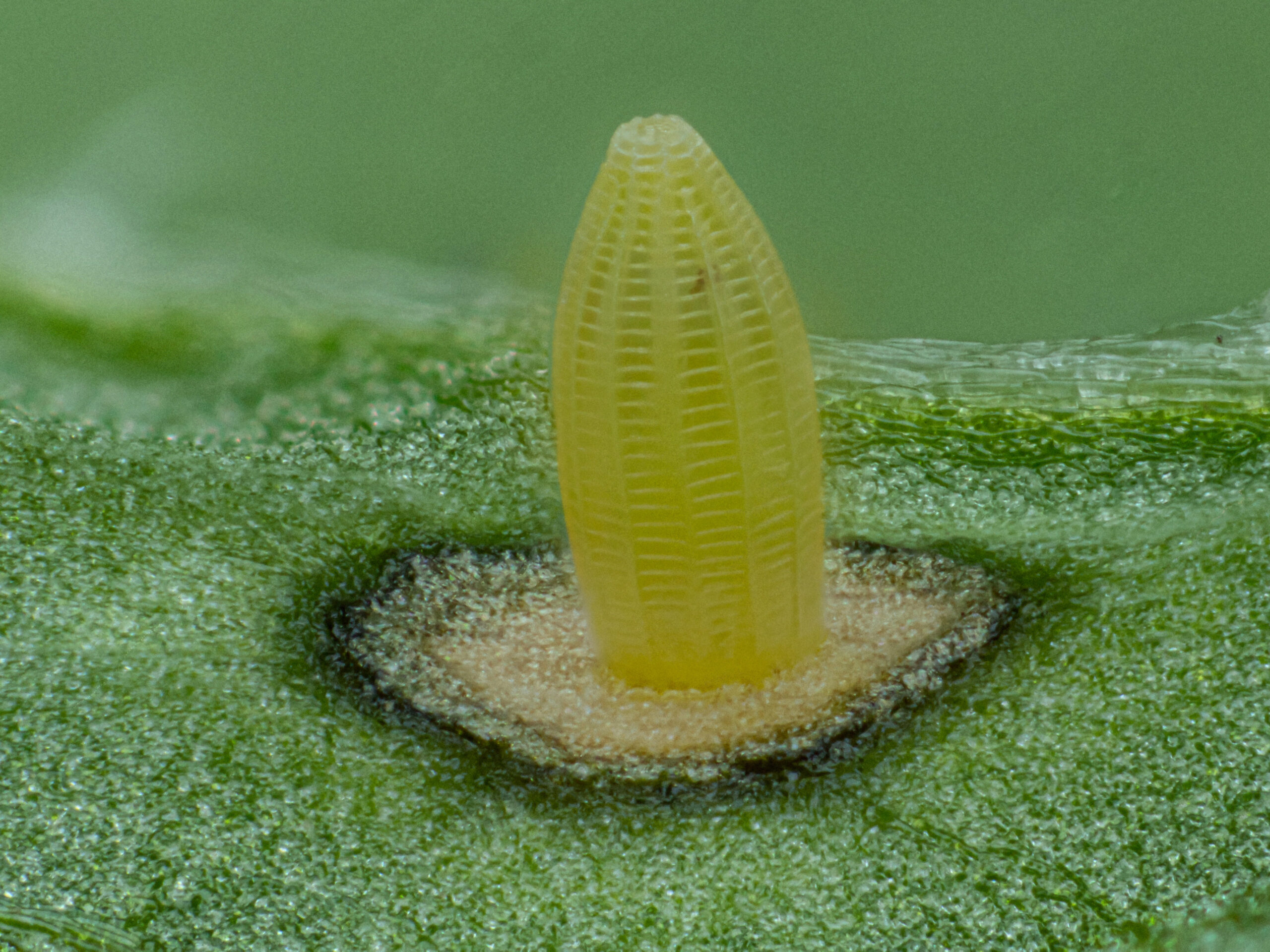Some cabbage and mustard (Brassicaceae) crops have an unusual defence mechanism against hungry butterfly caterpillars. After butterflies lay their eggs on a plant, leaf necrosis (cell death) occurs underneath the eggs, leading to killing of the eggs. This prevents the eggs from developing into caterpillars. This ‘scorched-earth strategy’ was first discovered in the eighties, but recent Wageningen research provides new insights. This strategy is only used by closely related species of cabbages within the Brassicaceae family, only when cabbage whites (Pieris) butterflies lay their eggs.
Weapon
Nina Fatouros, a researcher at the Biosystematics Group, and her colleagues studied 31 species from this plant family. They applied a fluid containing the eggs of different butterfly species onto the leaves. Four closely related plant species developed necrosis after exposure to the fluid, but mainly if the eggs were from cabbage white butterflies. This indicates that the plants have developed this necrosis as a new weapon against the specific butterfly species that adapted to the toxins of Brassicaceae plants, says Fatouros in a publication in New Phytologist. The necrosis is thus a result of the evolutionary arms race between cabbage plants and cabbage white butterflies.

 Some butterfly eggs on plant leaves cause a reaction, photo Hans Smid
Some butterfly eggs on plant leaves cause a reaction, photo Hans Smid 

